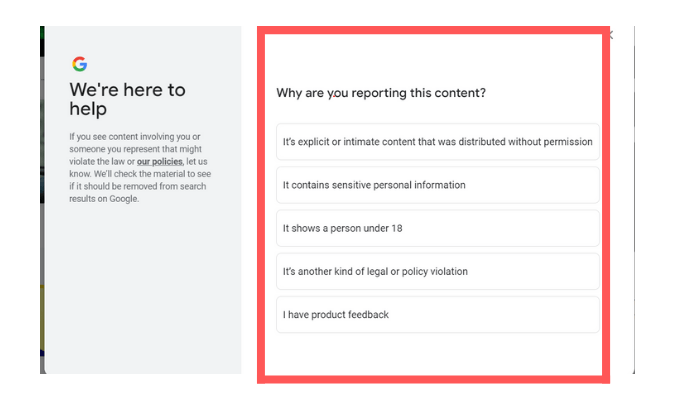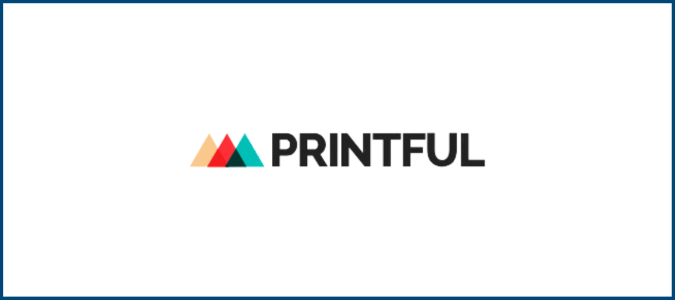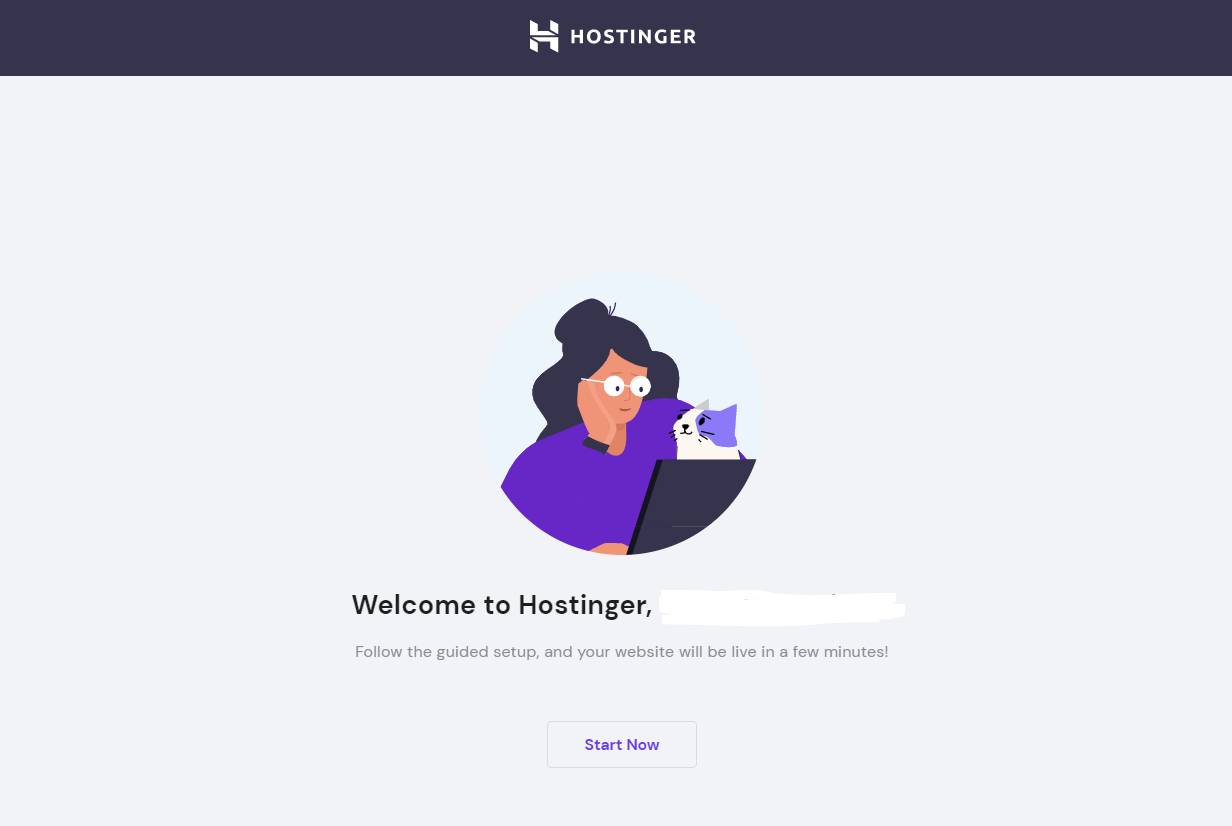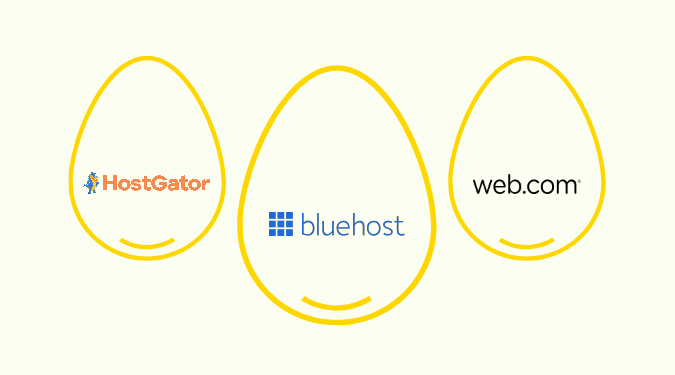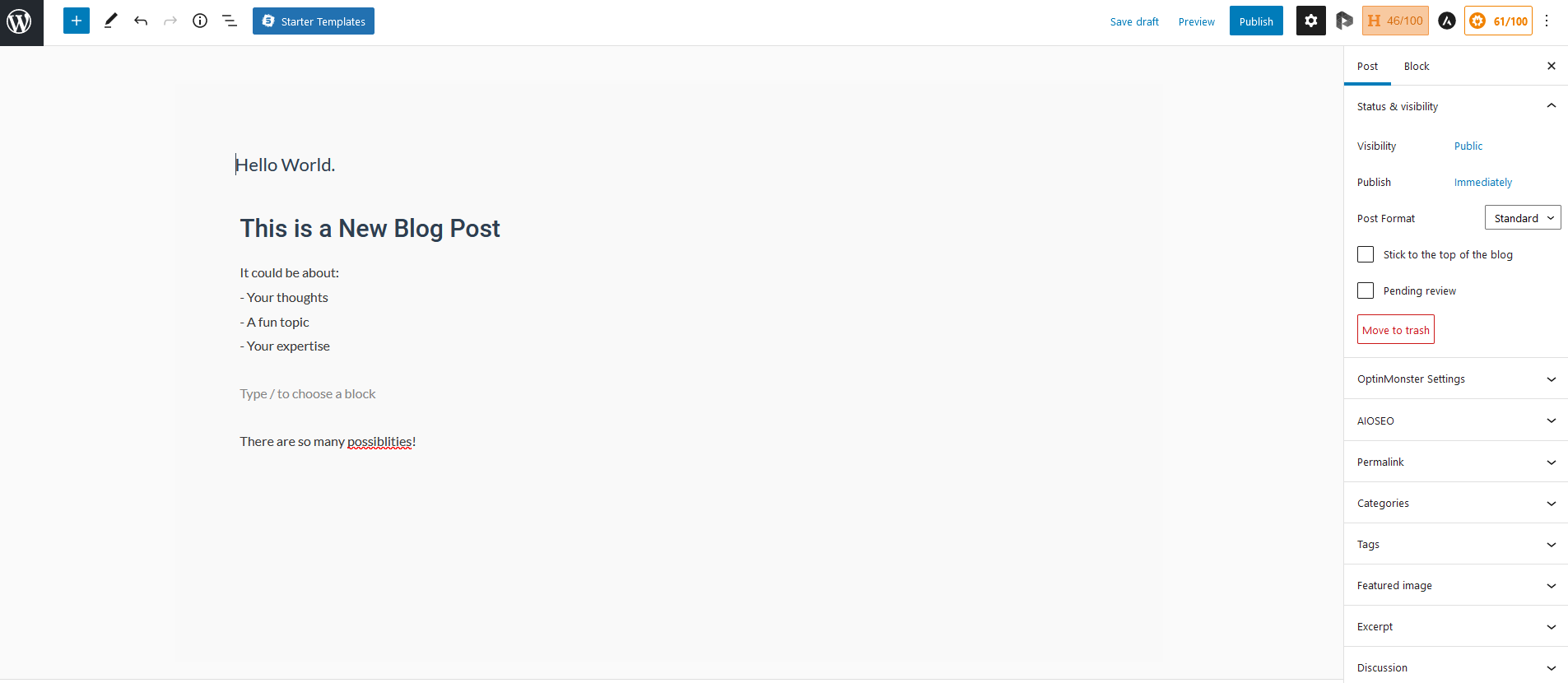Running a successful ecommerce site requires more than just selling quality products. You need to have good copywriting skills to create compelling copy that converts. Everything from your landing pages to product names and descriptions needs to be crafted with care.
If you’re not a great writer, you can take advantage of AI-powered writing assistants for your ecommerce site. Jasper.ai has several great templates made specifically for ecommerce sites. You just need to input some details, and the AI assistant will spit out text that you can use directly on your ecommerce site.
How Do I Get Started With Jasper.ai?
Starting with a blank slate can be tough for ecommerce business owners who don’t have copywriting experience. After all, copywriting is a challenging skill that can take years to master—and it’s definitely not something that everyone excels at.
Fortunately, AI-powered writing tools like Jasper.ai help bridge the gap for non-writers.

To get started, sign up for a Jasper.ai account. Plans are based on usage for how many words per month you need the software to generate for you. The entry-level starter plan should be fine for ecommerce brands that just need short-form content. All plans are backed by a five-day money-back guarantee.
Using Jasper.ai is very straightforward. You start with one of Jasper’s 50+ templates—many of which are designed for ecommerce stores. Then it’s just a matter of adding your copy and letting the software do the rest.
For example, let’s look at the product description template. Just fill in the short fields on the left side of the screen, and the AI will generate product descriptions for you.

Then it’s just a matter of selecting which output on the right side of the screen you like the most. You can always mix and match them or edit the descriptions to your liking.
What is Ecommerce Copywriting?
Ecommerce copywriting is any written text or content that’s created specifically for an online store. This includes copy for product categories, headlines, product descriptions, landing page copy, promotional offers, CTA buttons, and more.
In short, ecommerce copywriting is any and all text on an ecommerce site.
The primary purpose of ecommerce copy is to generate sales and conversions. But that doesn’t necessarily mean that all of the copy needs to be “salesy” or even focused on driving a sale. Good ecommerce copywriting is educational and informative—providing prospective buyers with the information they need to convert.
Marketing copy written for other platforms like email, Facebook, or ads can also fall within the scope of ecommerce copywriting. In most cases, all of this can be handled by the same writer.
What’s the Difference Between Ecommerce Copywriting and Content Writing?
Ecommerce copywriting and traditional content writing definitely have some similarities. Both should be written with the purpose of being read and digested by real people. They both should also be easy to understand, educational, and informative.
The primary difference between ecommerce copywriting and content writing is the angle and end goal. Generic website copy and blogs are made to inform an audience about a topic or teach them how to do something. Ecommerce copy is designed to sell a product.
Regular content writing should also have more emphasis on SEO. While SEO is still important for ecommerce copywriting, it’s a secondary goal in the grand scheme of things. Traditional copy can get people to websites by appeasing search engines, but ecommerce copy is all about getting those people to buy whatever you’re selling.
For example, let’s say you run an online store that sells outdoor sports equipment.
You might have a blog post that teaches people how to paddleboard. The post can break down different information about inflatable paddle boards compared to fiberglass boards. It might also cover the appropriate length of paddles based on your height and where you should be standing on the board.

But this is just regular content writing.
Ecommerce copywriting would cover the product names and descriptions of the actual paddle boards being sold on your website.

The text should not only describe the product features and what it does, but it should also highlight the benefits of the product.
Who Reads Ecommerce Copywriting?
Ecommerce copy must be written for a highly specific audience. You’re only trying to reach people who are actually interested in buying whatever you’re selling.
This is different from SEO copy that’s written for search engines and basically anyone. Bloggers that want to cast a wide net for site traffic might write copy that appeals to people who aren’t part of their target market. But this is never something that an ecommerce copywriter should do.
This means that effective ecommerce copywriting must start with a firm understanding of the products you’re selling and the audience who is buying them. Only then can you craft compelling copy that drives sales. Otherwise, you’ll just be guessing and the words will likely miss your audience.

If you’re selling beard oil, your copy shouldn’t try to appease the masses. You should be specifically targeting men who have beards—and typically longer beards that require oil for health and maintenance.
Who cares if your description doesn’t appeal to middle-aged women? They aren’t buying what you’re selling.
Why is Ecommerce Copywriting So Important?
Ecommerce copywriting can make or break your sales. Simply having products for sale on your website won’t be enough. There are just too many options for consumers, and they’ll shop elsewhere if your products aren’t clearly addressing their needs.
Your on-page copy is an opportunity to establish a connection with your audience. Carefully crafted words can show that your brand clearly understands your audience’s problems and how your products solve them.
When someone lands on one of your product pages, they shouldn’t be left wanting more information. The copy is not only a chance to describe the products and brand, but it’s also a chance to be persuasive and sell.
Ecommerce copywriting also helps establish and convey your brand voice. What exactly does your company stand for? How are your mission and goal intertwined with your products?
Maybe you’re donating a pair of socks for every pair of socks sold on your website. You want to share this information in a way that tells consumers they’re helping other people by purchasing something from your brand over the thousands of other retailers selling similar products.

You can’t do this with a product image or bullet list of specifications alone. This is where your copywriting skills need to shine.
How Can You Increase Conversions With Ecommerce Copywriting?
Driving conversions starts with a clear understanding of your audience. You need to bridge the gap between their needs and problems and how your product addresses what they’re looking for.
One of the simplest and most effective ways to increase ecommerce conversions is with the AIDA marketing framework.
- Attention — A headline or introduction that captivates the buyer while also explaining what the product is.
- Interest — Highlight the benefits of your product or brand in a way that gets your audience to express interest.
- Desire — Paint a dream picture of the outcome the buyer will get if they purchase your product.
- Action — End with a final step that gets them to convert.
If you’re not very creative and you’re struggling to come up with compelling copy using this methodology, you can just use the AIDA framework template on Jasper.ai.

You can continue to play around with different inputs to see how the AI-powered outputs will be affected. The more information you add to the left side of the template, the more Jasper has to work with as the tool generates quality ecommerce copy.
This framework is perfect for linear buying journeys. Consumers can clearly go through a process of identifying a product that addresses a need, recognizing the benefits associated with the product, and ultimately realizing they want what you’re selling before converting.
What Does an Ecommerce Copywriter Do?
An ecommerce copywriter is responsible for telling customers and prospects basic information about your products and brand. Ecommerce copywriters add quality text to online stores that drive sales.
Consistency is an important characteristic of an ecommerce copywriter.
You need to apply a consistent brand voice across all of your landing pages, products, and marketing materials. Otherwise, there’s no continuity as a prospect interacts with your brand. It doesn’t feel natural as they move from your social media post to a blog to a product page.
So it’s important to establish a clear brand image and voice from the very beginning. If you’re using an AI-powered writing assistant or similar tool, make sure you apply similar voices for all outputs.
For example, let’s say your brand is fun and playful. You might experiment with some humor in your product descriptions. But that won’t work if the copy on your other pages is stiff and professional. Your brand voice needs continuity across all pages and channels.
Which Pages On an Ecommerce Website Need Copywriting?
Every page of your online store needs to have ecommerce copywriting. Most ecommerce copy is short and descriptive. So you won’t have to worry too much about long-form content outside of your blog.
Landing pages just need to have captivating headlines and short descriptions. Product pages will be a little more in-depth.
Overall, here are the pages you need to focus on for ecommerce copy:
- Home page
- Product category pages
- Product pages
- Checkout screen
- Purchase confirmation and thank you page
- Email opt-in screen or popup
- Return policy
- Login page
- Account creation page
- Customer profile
- FAQ page
- About page
- Guest checkout
- Contact us
- Store locator
- Terms and conditions
While all of these pages need high-quality copy, not all of them will be salesy or promotional.
For example, your terms and conditions will be fairly boilerplate. This isn’t necessarily a chance to pitch your products. Thank you pages and other post-purchase copy won’t necessarily invoke another immediate conversion either.
Is Ecommerce Copywriting Good For SEO?
Ecommerce copywriting can be good for SEO. But that doesn’t mean that it’s always good for SEO.
Unlike other on-site content creation strategies, ecommerce copywriting is primarily written for conversions. In a perfect world, the text on the page will also perform well during bot crawls and indexing. But the SEO-friendliness of the copy should never come before the sales-driven angle.
For example, simply stuffing related keywords into your product descriptions might get people to land on your product page from an organic search. But that description will be useless once they land on the page, as it won’t tell them anything about your brand or what you’re selling.
Getting tens of thousands of people to land on your site organically is useless if your copy stinks and you’re not getting visitors to convert.
You can still apply SEO best practices where it fits. Just not at the cost of sacrificing sales.
How Do You Write High-Quality Ecommerce Copy?
Quality ecommerce copy takes time, patience, and a little bit of trial and error. You can fast-track success by taking advantage of Jasper’s ecommerce templates as inspiration.

You can also apply these ecommerce copywriting tips and best practices for success:
- Craft text at a middle-school reading level
- Keep descriptions short (usually under 300 words)
- Use positive language and avoid negative sentiment
- Add personality and flavor to your copy
- Create a sense of urgency
- Tell a story
- Establish a connection with your audience
- Avoid fluff words
- Don’t try too hard to appease search bots
- Be consistent
- Know your audience
- Use short sentences
- Use action words
- Add bullet points to your product pages
Your ecommerce copy won’t be perfect on day one. It’s an ongoing process that takes some time to get the hang of. But you should always be taking steps to improve your copy, as it has a direct impact on your sales and conversions.

